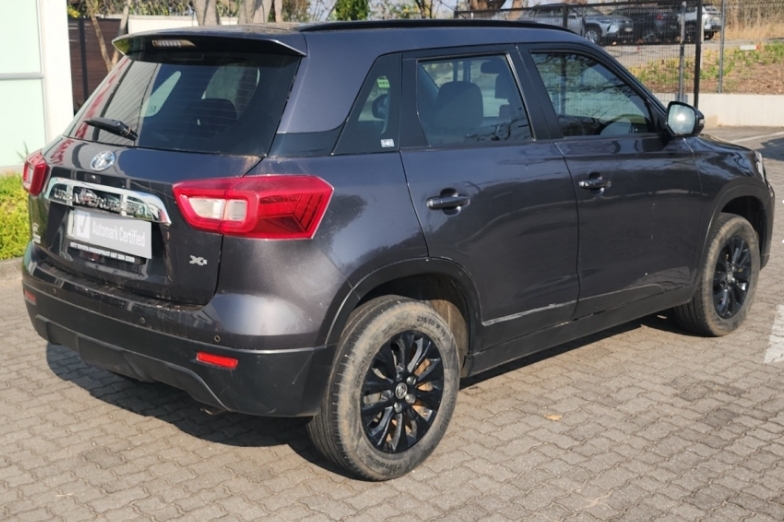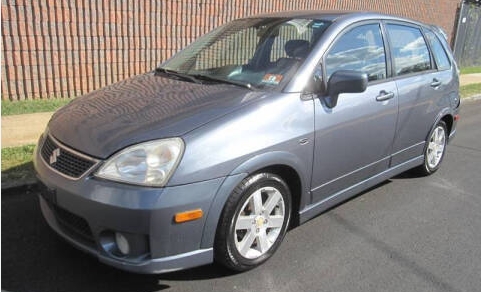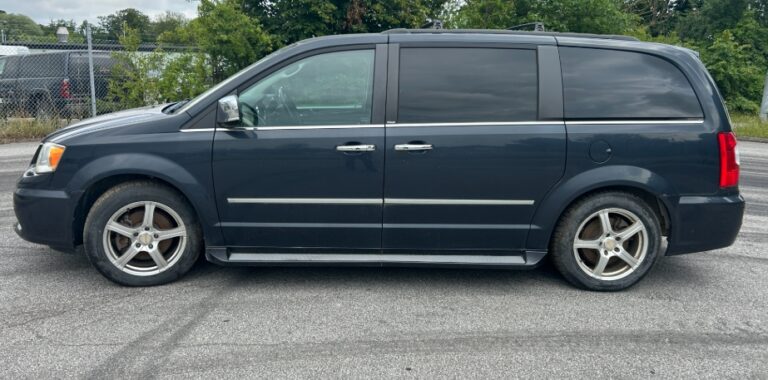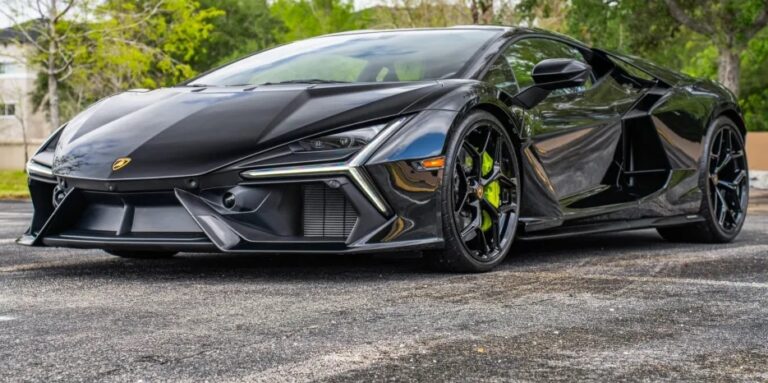The Two Lives of the Toyota Urban Cruiser: A Story of Evolution and Reinvention
In the sprawling lexicon of automotive nameplates, few have undergone as radical a transformation as the Toyota Urban Cruiser. The name itself evokes a clear image: a vehicle designed to navigate the concrete jungle with ease and style. Yet, the Urban Cruiser that roams the streets of New Delhi today bears almost no resemblance to the one that first debuted in Geneva over a decade earlier. Its evolution is not a linear progression of a single model but a fascinating tale of two distinct lives—a story of a bold European experiment followed by a pragmatic, partnership-driven rebirth for emerging markets. This is the complete history of the Toyota Urban Cruiser.
Part I: The Originalist – The XP110 (2008-2014): A Bold European Experiment
The story begins in the late 2000s, a period when the automotive world was just beginning to embrace the concept of the subcompact crossover. Nissan was readying its game-changing Juke, but Toyota, ever the meticulous planner, was already making its move. Unveiled at the 2008 Geneva Motor Show and launching in 2009, the first-generation Toyota Urban Cruiser (chassis code XP110) was a product designed with a distinctly European sensibility.
Marketed as a “tough urbanite,” its design was a blend of a B-segment hatchback’s agility and a small SUV’s rugged posture. It wasn’t a rebadge but a unique vehicle with siblings in other markets: the second-generation Toyota ist in Japan and the Scion xD in North America, each with its own specific styling and market positioning. The Urban Cruiser’s design was characterized by its short overhangs, pronounced wheel arches, and a chunky, upright stance that maximized interior space within a compact footprint of just under 4 meters.
Technical Specifications and Innovation:
The European Urban Cruiser was surprisingly sophisticated under the skin, offering powertrain choices that prioritized efficiency and, uniquely for its class at the time, all-weather capability.
- 1.33-litre Dual VVT-i Petrol Engine: This was the primary petrol option, producing 99 horsepower. It was an advanced unit for its day, featuring a Stop & Start system to conserve fuel in city traffic, a technology that was still a novelty in the segment. It was paired exclusively with a 6-speed manual transmission and front-wheel drive (FWD).
- 1.4-litre D-4D Turbodiesel Engine: The diesel variant was arguably the star of the lineup. It generated a healthy 89 horsepower and a robust 205 Nm of torque. Critically, this engine was available with Toyota’s Active Torque Control all-wheel-drive (AWD) system. This intelligent system could seamlessly distribute torque between the front and rear axles, making the Urban Cruiser a genuinely capable vehicle in snow or on slippery surfaces—a significant selling point that its FWD-only rivals lacked. This version also used a 6-speed manual transmission.
Trim Levels (UK Market as an example):
The trim structure was simple, reflecting its premium-for-its-size positioning.
- Standard: The entry-level model was only available in FWD with the 1.33L petrol engine. It came equipped with 16-inch steel wheels, air conditioning, a six-speaker audio system with MP3 compatibility, and seven airbags, highlighting Toyota’s commitment to safety.
- TR: This mid-range trim added desirable features like 16-inch alloy wheels, Bluetooth connectivity, rear privacy glass, and a leather-trimmed steering wheel. It was a popular choice that balanced cost and features.
- SR: The top-tier trim was predominantly paired with the 1.4L D-4D AWD powertrain. It elevated the Urban Cruiser with features like automatic climate control, keyless entry and start, and sometimes offered upgrades like auto-dimming rearview mirrors.
The Commercial Downfall:
Despite its clever packaging, innovative AWD option, and impressive safety credentials, the original Urban Cruiser was a commercial failure in Europe. It faced several challenges: its price was high, placing it in competition with larger C-segment hatchbacks; its interior, while functional, was criticized for its use of hard plastics that didn’t match the premium price tag; and most importantly, the arrival of the Nissan Juke in 2010 completely redefined the segment with its polarizing but undeniably head-turning style. The Urban Cruiser, by comparison, was seen as conservative and quirky rather than daring. Production quietly ceased in 2014, and the nameplate was retired, seemingly for good.
.
NO MORE dead batteries with this:

.
Part II: The Rebirth – The Pragmatic Contender (2020-2022): A Strategic Alliance
For six years, the Urban Cruiser name lay dormant. During this time, the global automotive landscape shifted dramatically. The subcompact SUV segment exploded in popularity, particularly in emerging markets like India. Recognizing the need to compete in this highly competitive and price-sensitive space, Toyota entered into a global partnership with fellow Japanese automaker Suzuki, a master of building small, efficient, and affordable vehicles.
This alliance gave birth to the second incarnation of the Urban Cruiser in 2020. This new model was not a ground-up Toyota design but a badge-engineered version of the hugely popular Suzuki Vitara Brezza. Launched primarily for India, South Africa, and parts of the Middle East, this strategy was a masterstroke. It allowed Toyota to instantly enter a booming segment with a proven product, bypassing years of development costs, while leveraging its own untouchable brand reputation for quality, reliability, and after-sales service.
The changes were purely cosmetic. The 2020 Urban Cruiser received a new twin-slat chrome grille reminiscent of the Toyota Fortuner, a slightly redesigned front bumper, and Toyota badges. The sheet metal, interior, and powertrain were identical to its Suzuki counterpart.
Technical Specifications:
- 1.5-litre K15B Petrol Engine: The sole engine option was Suzuki’s reliable and efficient 1.5-litre four-cylinder petrol engine, producing 103 horsepower and 138 Nm of torque. It featured Suzuki’s mild-hybrid technology (SHVS – Smart Hybrid Vehicle by Suzuki) in the automatic variants, which used an integrated starter generator to assist with acceleration and improve fuel economy.
- Transmissions: Buyers could choose between a 5-speed manual or a 4-speed torque converter automatic. While the 4-speed automatic was considered dated by global standards, it was prized for its smoothness and reliability in urban conditions.
Trim Levels (Indian Market):
Toyota differentiated itself by offering a more generous base specification than its Suzuki sibling. The trim levels were named Mid, High, and Premium.
- Mid: The entry-point, available in both manual and automatic. It came well-equipped with push-button start/stop, automatic climate control, a 2-DIN audio system with Bluetooth, and projector headlamps.
- High: This volume-selling trim added a 7-inch touchscreen infotainment system with Apple CarPlay and Android Auto, cruise control, and 16-inch alloy wheels.
- Premium: The top-of-the-line model included luxury features like LED projector headlamps, LED fog lamps, a leather-wrapped steering wheel, rain-sensing wipers, and an auto-dimming rearview mirror.
This version of the Urban Cruiser was a resounding success. It consistently sold well, proving that for many buyers, the assurance of the Toyota badge on a competent and well-priced product was a winning combination. Production ran until mid-2022, when the underlying Vitara Brezza was due for a major generation change.
Part III: The Evolution Continues – The Hyryder (2022-Present): The Tech-Forward Successor
If the second Urban Cruiser was a simple rebadge, the third iteration, launched in late 2022, represented a far deeper level of collaboration. Named the Toyota Urban Cruiser Hyryder, this all-new model was co-developed with Suzuki (which sells its version as the Grand Vitara). While they share the same platform, powertrains, and core structure, Toyota had a much greater say in the design and, crucially, contributed its world-renowned hybrid technology.
The Hyryder is a larger, more premium, and technologically advanced vehicle than its predecessor. Its design is distinctively Toyota, with a “Crystal Acrylic” upper grille, slim LED daytime running lights, and a large lower air dam that aligns it with Toyota’s global SUV family. It moved the nameplate from a sub-4-meter vehicle to a larger, more competitive compact SUV.
Technical Specifications and Powertrain Duality:
The Hyryder’s most significant evolution is its offering of two distinct electrified powertrains, catering to different price points and priorities.
- Neo Drive (Mild Hybrid): This powertrain uses Suzuki’s next-generation 1.5-litre K15C petrol engine with mild-hybrid technology, producing 102 horsepower. It is available with a 5-speed manual or a 6-speed torque converter automatic. In a direct nod to the original 2008 Urban Cruiser, the manual version of the Neo Drive is available with an All-Grip AWD system, making it one of the very few vehicles in its class to offer this capability.
- Hybrid Drive (Strong Hybrid): This is the flagship powertrain and is pure Toyota technology. It pairs a 1.5-litre, 3-cylinder Atkinson cycle petrol engine with a powerful electric motor and a larger lithium-ion battery pack. The combined output is 114 horsepower, managed by Toyota’s e-CVT gearbox. This system allows the Hyryder to run in pure EV mode for short distances, resulting in class-leading fuel efficiency.
Trim Levels (Indian Market):
The trim structure was revised to reflect the dual-powertrain strategy. The Neo Drive is available in E, S, G, and V trims, while the more premium Strong Hybrid is offered in S, G, and V trims.
- E (Neo Drive only): A bare-bones entry model with projector headlamps and basic safety features.
- S: Adds a 7-inch touchscreen, cruise control, and a digital instrument cluster.
- G: A significant step up, adding full LED headlamps, a larger 9-inch touchscreen, six airbags, connected car technology, and ambient lighting.
- V: The top-spec trim boasts premium features like a panoramic sunroof, a 360-degree camera, leatherette seats, and a head-up display in the Strong Hybrid variant.
Conclusion: A Nameplate’s Journey Through a Changing World
The history of the Toyota Urban Cruiser is a perfect microcosm of the automotive industry’s evolution over 15 years. It began as an innovative, product-led attempt to create a new niche in Europe—a vehicle ahead of its time, perhaps, but one that ultimately misjudged the market’s desires and price sensitivity.
After a period of dormancy, it was reborn not through internal innovation, but through strategic collaboration. This second life was a market-led, pragmatic decision to leverage brand strength on a proven platform in fast-growing economies. The third and current chapter, the Hyryder, represents the synthesis of these two approaches: a co-developed product that combines Suzuki’s expertise in cost-effective platforms with Toyota’s leadership in hybrid technology, all while reintroducing a signature feature—AWD—from its own distant past.
From a quirky European original to a badge-engineered bestseller and finally to a tech-forward hybrid SUV, the Urban Cruiser nameplate has proven to be as adaptable and resilient as the urban environments it was designed to conquer. Its journey is a testament to Toyota’s ability to learn, pivot, and redefine a model’s identity to meet the demands of a perpetually changing world.







